Building Materials
Building stones
Bricks and clay products
Cement concrete
Timber and wood products
Metals and alloys
Paints, varnishes, distempers
Asphalt, bitumen and tar
Plastics and fibers
Glass
Asbestos, adhesives and abrasives
Clay Products
Bricks
Tiles
Fire clays and fire bricks
Terracotta
Earthenware
Clay pipes
Bricks
Block of tampered clay or ceramic material molded to desired shape and size, sun dried and if required burnt to make it more strong, hard and durable
Bricks
Commonly it is rectangular in shape
Length = twice width of brick + thickness of mortar
Height = multiple of width of brick
Usual size available in Pakistan is 8¾ x 4¼ x 2 ¾ inches to make it 9 x 4.5 x 3 inches with mortar
Indian Standard size 19 x 9 x 9 cm and 19 x 9 x 4 cm to make it 20 x 10 x 10 cm and 20 x 10 x 5 cm with mortar
Bricks are most common form of structural clay products; others being tiles, pipes, terracotta, earthenware, stoneware, porcelain, and majolica
Historical Development
Sun-dried bricks - With the availability of fire became burnt bricks
In Mesopotamia, palaces and temples were built of stone and sun-dried bricks in 4000 B.C.
The Egyptians erected their temples and pyramids of stones by 3000 B.C.
By 300 B.C., Greeks perfected their temples of limestone and marble
During industrial revolution, machines were developed to quarry
Late in 19th century tall buildings were built, of steel and reinforced concrete (pored into simple forms), economically
Through the mid-1800s
Primary Building Materials
Late 1800s
New Products Developed
Ended Masonry’s Dominance
20th Century Developments
Steel Reinforced Masonry
High Strength Mortars
High Strength Masonry Units
Variety of Sizes, Colors, Textures & Coatings
Adobe
Spanish-American name applied to sun-dried brick and to the clay soil from which the brick is made.
Adobe soil is composed of very fine mixture of clay and sand like materials
Adobe soil has great plasticity when moist, but when dry is so coherent that tillage is almost impossible
Soil is used combined with straw, molded and baked in sun for 7 to 14 days
Used in regions of low rainfall and dampness
Civil Engineering Uses
Construction of exterior and interior walls, partitions and boundary walls
Construction of piers, abutments
Construction of footings
Construction of miscellaneous load bearing structures
Classification of Bricks
Sun Dried, Un-burnt or Kacha Bricks
After molding dried in sun, and are used in the construction of temporary structures which are not exposed to rains.
Burnt or Pucca Bricks
Burnt in an oven called kiln to provide strength and durability
First Class Bricks
Thoroughly burnt, deep red, cherry or copper color
Straight edges, square corners, smooth surface
Free from flaws, cracks, stones and nodules
Uniform texture & ringing sound
No scratch marks with fingernails
Water absorption 12-15% of dry weight in 24 hours
May have only slight efflorescence
Second Class Bricks
Small cracks and distortions permitted
Water absorption 16-20% of dry weight allowed
Recommended for all hidden work and centering of RBC
Third Class Bricks, Pilla Bricks
Under burnt, Soft and light colored producing dull sound
Water absorption 25% of dry weight
Recommended for temporary structures
Fourth Class Bricks,
Jhama, Khingar
Brittle in nature
Ballast of these bricks used for foundation and floors and as road metal
Classes
350 (35 N/mm2) 125 (12.5 N/mm2)
300 (30 N/mm2) 100 (10 N/mm2)
250 (25 N/mm2) 75 (7.5 N/mm2)
200 (20 N/mm2) 50 (5 N/mm2)
175 (17.5 N/mm2) 25 (2.5 N/mm2)
150 (15 N/mm2)
Sub Classes
Subclass A. Tolerance 0.3% in dimensions
Subclass B. Tolerance 0.8% in dimensions
Heavy Duty. Compressive strength > 40 N/mm2
Basis of Usage
Common Brick. General multi-purpose
Facing Brick. Good appearance, color, textured, durable under severe exposure
Engineering Bricks. Strong, impermeable, smooth and hard
Basis of Finish
Sand Faced Brick. Textured surface by sprinkling sand inside mold
Rustic. Mechanically textured finish
Basis of manufacturing method
Hand Made. Hand molded
Machine Made. Wire cut, pressed and molded bricks
Basis of Burning
Pale Bricks are under burnt
Body Bricks are well burnt in central portion of kiln
Arch Bricks are over burnt. Also called clinker
Stone
Natural material
Heavier
High dressing cost
Costly except in hilly areas
Less porous, good for hydraulic structures
Greater strength
Better heat conductor
Weather resistant
Superior quality stone is monumental and decorative
Bricks
Manufactured from clay
Lighter
Moldable to any shape
Cheaper except in hilly areas
More porous, needs water proof treatment
Reasonable for normal loads
Poor heat conductor
Needs pointing and plastering
Architectural effect is achievable
Ingredients of Good Brick Earth
Brick earth is formed by the disintegration of igneous rocks. P. On hydration it gives a clay deposit Al2O3. 2H2O called kaolin.
Alumina or clay 20-30% by weight
Silica or sand 35-50% by weight
Silt 20-35% by weight
Remaining ingredients 1-2% by weight
Lime (CaO)
Magnesia (MgO)
Iron oxides
Alkalis (Sodium potash, etc)
WaterSilica, Sand – Present as free sand or silicate. Its presence in clay produces hardness, resistance to heat, durability and prevents shrinkage and warping.
Alumina – Fine grained mineral compound. Moldable plastic when wet, becomes hard, shrinks, warps and cracks when dry.
Lime – Acts as binder for brick particles. Reduces shrinkage when present in small amount, excess causes the brick to melt and lose shape.
Magnesia – Provides darker yellow color with iron. Usually less than 1%.
Iron Oxide – Helps fusion of brick and provides light yellow to red color to brick. Should not be present as iron pyrites
Harmful Substances
Lime in excess or in lumps and pebbles, gravel, etc
Iron Pyrites
Alkalis in excess
Organic Matter
Carbonaceous Materials
Additives
Fly Ash – silicates help in strength development
Sandy Loam – controls drying of plastic soil
Rice Husk Ash – controls excessive shrinkage
Basalt Stone Dust – modifies shaping, drying & firing
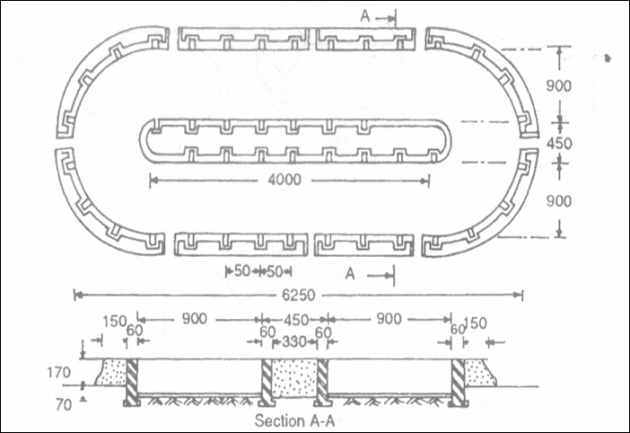
Operations in Manufacturing of Bricks
Preparation of Brick Earth
Un-soiling
Digging
Weathering
Blending
Tempering
Molding of Bricks
Drying of Bricks
Burning of Bricks
Un-soiling – Removal of top 20 cm organic matter and freeing from gravel, coarse sand, lime etc
Digging – additives spread, soil excavated, puddled, watered and left over for weathering
Weathering – heaps left for one month for oxidation and washing away of excessive salts in rain
Blending – sandy earth and calcareous earth mixed in right proportions with right amount of water
Tempering – kneading of blended soil with feet or with a pug mill to improve plasticity and homogeneity
Molding – giving right shape
Hand molding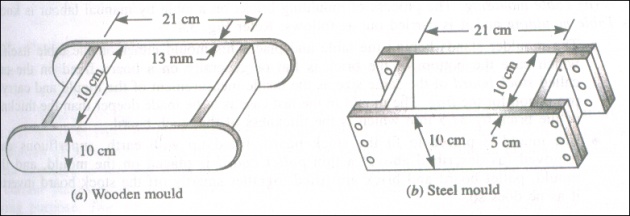
Ground molding. Molded on sand. No frog in bricks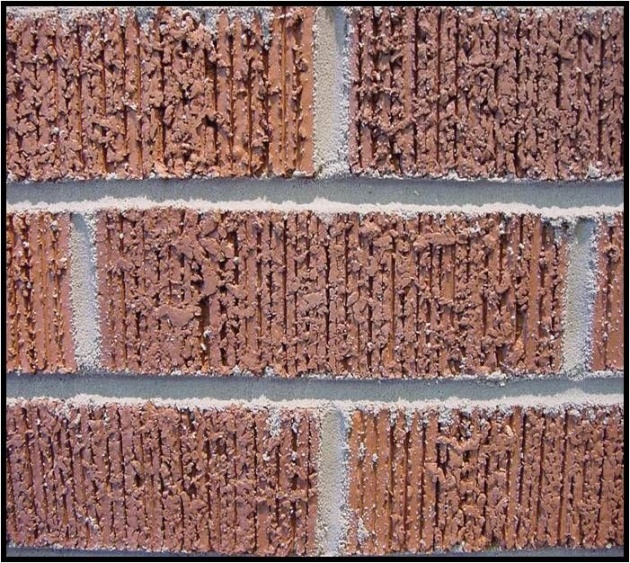
Table molding. Molded on stock boards with frog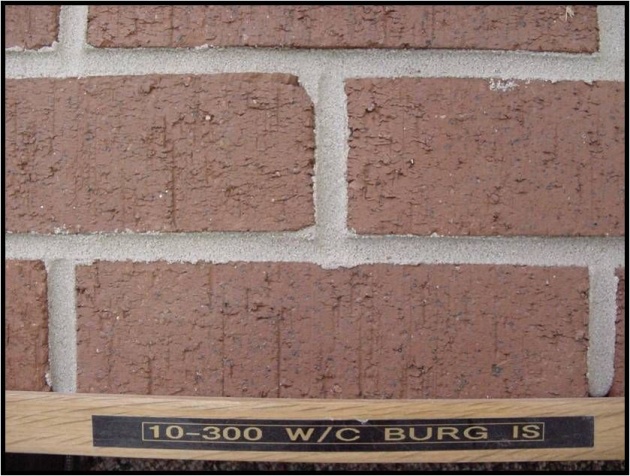
Machine molding
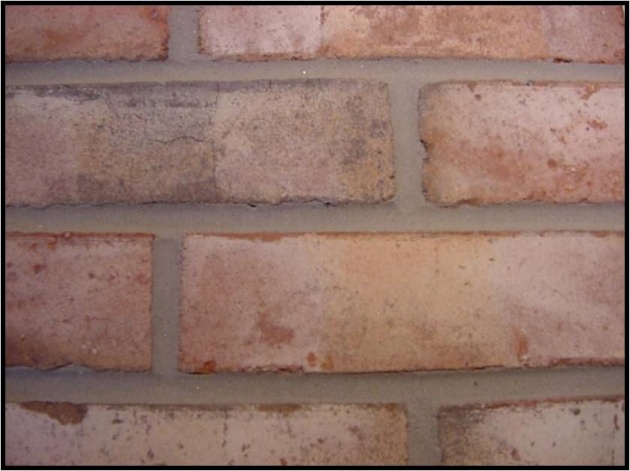
Plastic method or Stiff-Mud process. Molded stiff clay bar cut by wire into brick size pieces. Structural clay products
Dry Press method. Moist powdered clay fed into machine to be molded into bricks. Roof, floor and wall tiles
Drying – Removing 7-30% moisture present during molding stage. This controls shrinkage, fuel and burning time. Natural open air driers in shades
Manufacturing of Burnt Bricks
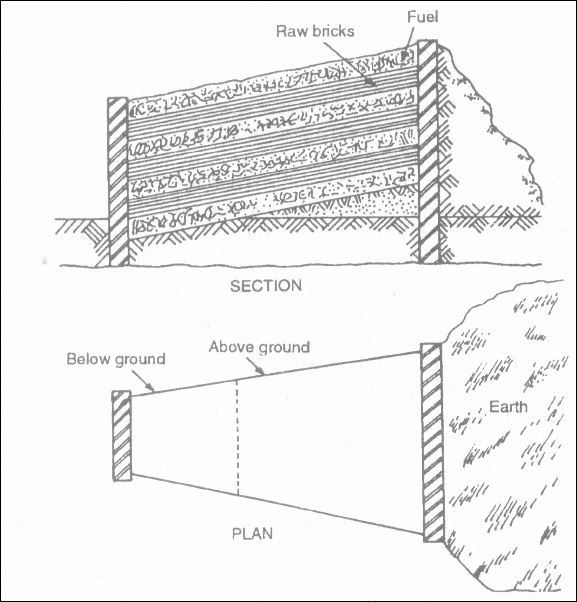
Burning Stages
Dehydration (400-650 °C). Water smoking stage in which water from pores driven off
Oxidation (650-900 °C). Carbon eliminated and ferrous iron oxidized to ferric form. Sulphur is removed
Vitrification (900-1250 °C). Mass converted into glass like substance
Incipient vitrification. Clay just softens to adherence
Complete vitrification. Maximum shrinkage
Viscous vitrification. Soft molten mass, loss in shape, glossy structure on cooling
Clamp or Pazawah Burning
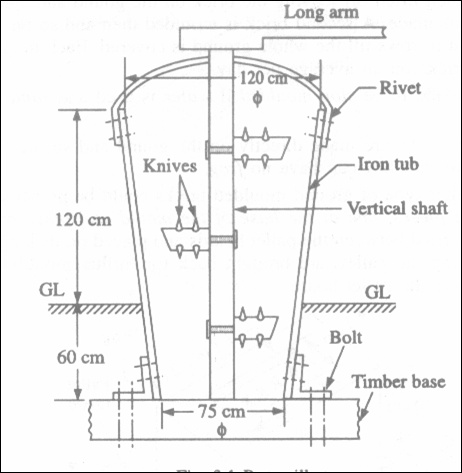
Alternate layers of bricks and fuel encased in mud plaster.
Fuel consists of grass, cow dung, litter, wood, coal dust
Brick layer consists of four to five courses of brick
25,000 to 100,000 bricks in three months cycle
Kiln Burning

Intermittent kiln. Loaded, fired, cooled and unloaded before next loading
Continuous kiln. Bricks are loaded, fired, dried and cooled simultaneously in different chambers. Example: Bull’s trench kiln and Hoffman’s kiln
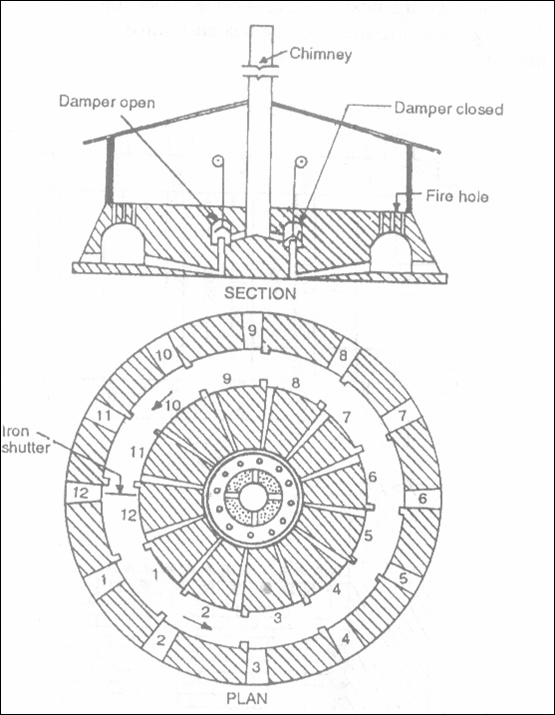
Testing of Bricks
Compressive strength Test. Sample prepared from smooth, parallel face, brick is soaked 24 hours and stored under damp jute bags for 24 hours followed by further immersion in water for three days. Frog is flushed by mortar.. Maximum load at failure divided by average area of bed face gives the value for compression strengtyh and absorption test.
24 hours immersion cold water test.
Dry bricks oven dried at 105° ± 5° C
Bricks immersed in water at 27° ± 2° C for 24 hrs
Soaked bricks weighed W2
Water absorption in % = (W2 – W1)/W1 x 100
Five hours boiling water test
Oven dried bricks weight W1
Bricks immersed in water and boiled for 5 hours and then cooled down at room temperature in 16-19 hours
Cooled down weight as W3
Water absorption in % = (W3 – W1)/W1 x 100
Warping Test. 10 bricks sample is used.
Concave warping
Convex warping



